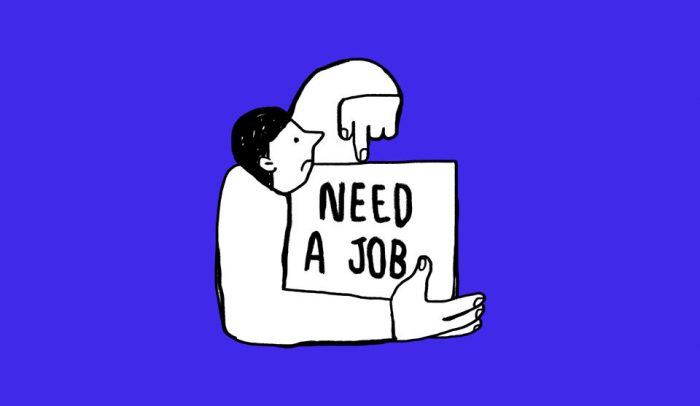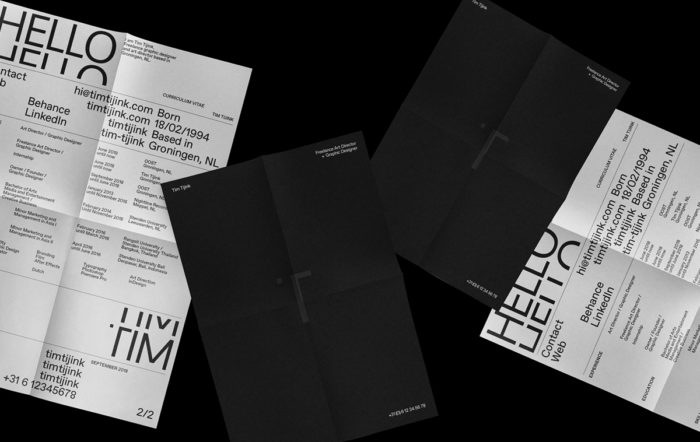“Oh my God, that was my idea!”
Picture yourself in the aftermath of a multi-stage application process for a job you were really excited about. We’re talking HR screening, manager interview, VP interview, test project—the whole nine. But the company decided to “go in another direction” in the end, and all you’re left with is a new LinkedIn contact and an empty thank-you note to write. Sucks, but it happens—a lot. On to the next one, right?
Well, not so fast. A few weeks later, a Tweet from that company shows up in your timeline, and the link seems familiar. Too familiar. It’s a piece that you pitched during the interview process, without a single mention of your work in the published piece!
While it’s certainly immoral for companies to publish work that was pitched to them by applicants, it’s hardly uncommon. For that reason, many established creatives are saying it’s time to rethink the practice, advising fellow creatives to never work for free—in the application process, as spec work, ever. But a creative test, project, or assignment is still a common part of the evaluation process—in some cases, it’s the only way to gauge how a prospective candidate works, thinks, and executes on ideas. So is there any way to conduct a project or challenge to evaluate a prospective employee or partner in a fair way?
The short answer is yes, you can conduct test projects in a way that’s not exploitative or immoral, but it requires some intentionality, and there are some different ideas about how to do it. Here, we’ll explore some tactics people are using to create a more equitable process. Then you can draw your own conclusions.
Now or later?
There are some different schools of thought when it comes to choosing when to offer a creative test or project. Most frequently, the test is given at the end of the interview process—the “final boss” that applicants have to clear before a decision is made on their candidacy. The most common justification for this structure is that the test is given to only a few people, so the work isn’t required of those who don’t advance far enough in the process. And that sounds simple enough—with a project at the end, you only need a sample project from the individuals who have interviewed, and whose portfolios or writing samples have already been examined.
But author and marketing thought leader Jay Acunzo takes the opposite approach: he puts the project at the beginning of the application process. One of his reasons is that a project at the beginning eliminates his unconscious biases from the start, and allows him to evaluate the work of all applicants before he meets them or learns anything about their background.
“Unfortunately (when you back-load the project), you may have missed someone who was brilliant at the work because you focused on the wrong things early, like where they went to school or whether they made you laugh,” Acunzo said. “Logically, a first filter is the more objective question of whether or not they can do the work, and to what degree, and in what ways they make the work their own.”
Indeed, that means a great number of people who complete the project won’t end up getting the job. But the trade-off for more work in the application process, in Acunzo’s mind, is a more fair evaluation.
Can the employer use the work?
Again, taking an applicant’s hard work and passing it off as someone else’s is never okay, but it does happen. Some say that the employer should only be allowed to use the work pitched during the interview or audition process if and when the applicant is hired. Of course, at that point, using the work is perfectly acceptable—it might’ve been a big part of the decision to choose this applicant, after all.
In most cases, employers probably shouldn’t use the work of an applicant that they didn’t hire. At the very least, the applicant should be given proper credit and compensation for the idea.
Andie Diemer, a New York-based photo editor, recalled the interview process for a promotion to become the head of a digital photo team at an old company. As part of the process, she had to put together documentation and suggest new ideas about how to improve the department. While she was passed over for someone with more experience, most of her ideas and documentation were enacted with little credit. Although it was for a promotion and not a new position, Diemer felt like her company took advantage of her time and hard work.
“I felt like they used me in a way that I really didn’t appreciate,” Diemer said.
Diemer recently had a more positive experience in an “audition” cycle for a part-time role at a company in the television industry, a test for creative applicants before the company would make a decision on a longer-term commitment. She was pleased with the upfront contract—she would be paid for her efforts at an agreed-upon day rate, and for the duration of the audition process, she’d effectively function as a full member of the hiring team for a few days a week. The company made it clear that any work that was good enough could make it live on air.
Since she was fairly paid for the work she was doing, and the company’s intentions were clear ahead of time, Diemer was thrilled—not enraged—when her work was selected for use, even before the audition process was over.
“I couldn’t believe it until I saw it,” Diemer said. “It was a big get for me, and I was honored.”
Do you have the time?
For better or worse, there’s often an impression that a completed test project has to be HUGE and exceptionally well done, whether that’s actually true or not. If the test comes in the beginning of the consideration process, it’s your chance to make an early impression and stand out from the crowd. If it’s the last round, it’s the final hurdle—once you’ve made it this far, of course you’ll spend a lot of time going hard to the finish line!
The easiest way to cap an applicant’s efforts and ensure that they’re not spending an inordinate amount of time on the project is to institute a time limit. But a limit that’s too generous can make the project seem daunting, and a limit that’s too prohibitive can be a roadblock for some. And while there’s not a right way, both schools of thought prioritize consideration for the applicant.
Some proponents of a more relaxed time frame for the project, like Diemer, say that it allows busy applicants the time to balance their day jobs, personal lives, and the application. It ensures that you’re not penalizing someone for having kids, a second job, or another extracurricular commitment. It can also give those who truly care about the work an opportunity to shine through. While Diemer acknowledges that photo editing isn’t the same as writing or graphic design, and thus should be tested differently, Diemer thinks that someone who puts a lot of effort into the project would similarly put a lot of effort into the daily routine.
“I think the project can be used to see who wants to rise to the top—setting people up in a situation that allows them to decide how much of their time they want to pour into this,” she said.
Others argue that imposing a fairly strict (but respectful) time limit, and emphasizing that the applicants aren’t expected to turn in a totally-polished piece, is the most fair way to test. At Ceros, most of our creative test projects have a time limit of three days—long enough to allow for regular commitments to be addressed, but short enough that applicants have to think on their feet.
The test for creative applicants is really a critical thinking exercise—we’re not concerned much with the bells and whistles. Our tests are meant to gauge the applicant’s experience level and thought process—how they make connections and draw conclusions. We want to see a line of thinking that matches up with the responsibilities and attributes of the open role. Adding flourishes in PowerPoint is not what the test is about—you can see fully-polished work in any creative’s portfolio or in any writer’s clips.
The test is a reflection of the administer
The hiring company shouldn’t be the only party that gets something out of the test for creative applicants. Ultimately, the test is a reflection of the company giving it—the parameters, requirements, and ground rules should say a lot about the type of people that work there and the type of work that gets done. The work should be an accurate reflection of the kind of work that the person will be doing day-to-day, and the amount of work that’s required should line up properly with the time limit that’s been set.
“I don’t want to spend a day of my weekend working on something for a job that I’m actually not that interested in,” Diemer said.
Consider that the test will shape the applicant’s view of the company in the same way that an interview with a future manager might. If the manager put their foot in their mouth during the interview, the applicant would certainly notice, and might be dissuaded from considering the company. Similarly, if the creative test is lame or expects an inordinate amount of work, that’s a bad sign, and applicants will notice.




